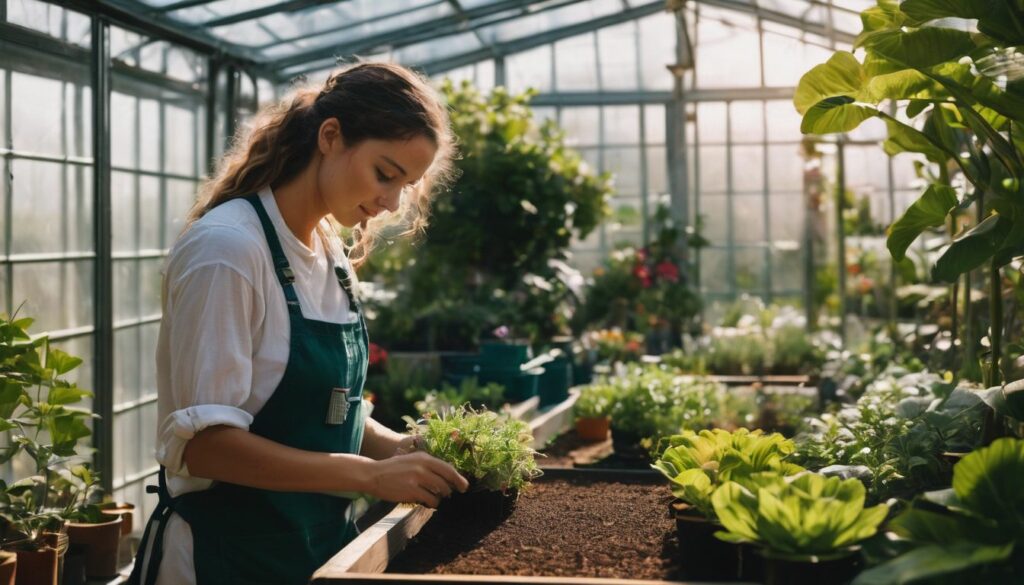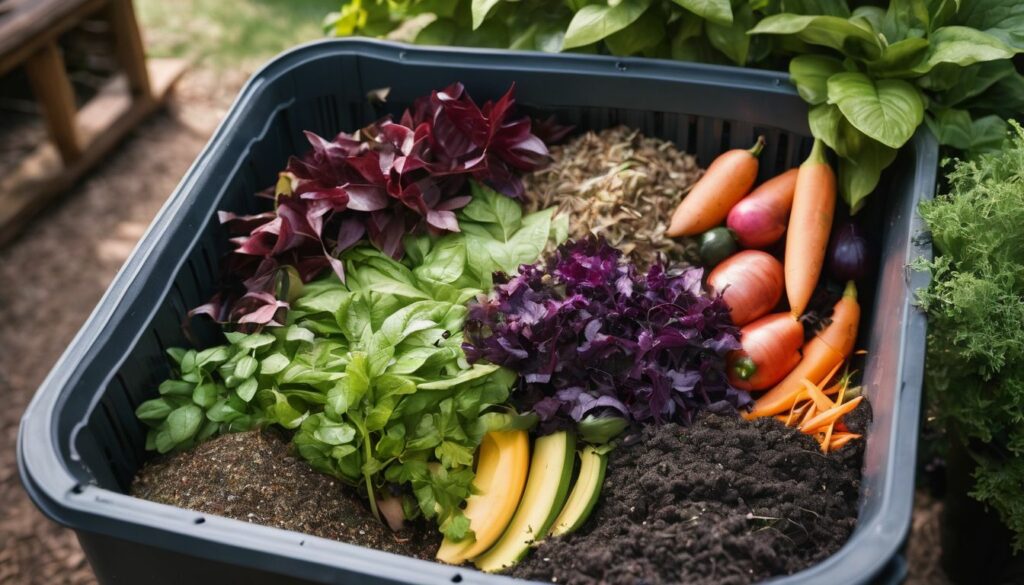Do the bright city lights and constant commotion have you dreaming of a different pace, one that’s self-sustaining and simpler? You’re not alone in feeling stuck on life’s fast track, yearning for tranquility and independence.
Pulling from my own journey as well as exhaustive research, this blog post aims to offer an all-inclusive guide to family homesteading – delivering practical solutions for forging a sustainable and self-reliant lifestyle.
Are you ready to take the first step on an exhilarating adventure towards serene countryside living?.
Key Takeaways
- Homesteading is about creating a self – sufficient and sustainable lifestyle where families grow their own food, preserve the harvest, and learn essential skills.
- By embracing homesteading, families can enjoy fresh and chemical-free produce, reduce reliance on store-bought items, and teach children valuable skills.
- Homesteading involves growing your own food in gardens or fields, preserving food through techniques like freezing and canning, and using herbs for natural medicine.
- Involving children in homestead activities teaches them important life skills and instills a sense of responsibility. Managing a large family on a homestead requires effective organization and prioritization.
What is Homesteading?
Homesteading is the practice of living a self-sufficient and sustainable lifestyle, where individuals or families grow their own food, preserve their harvests, and thrive on the land they cultivate.
Definition
Homesteading is living a life where you make most things at home. It is about families doing tasks to meet their own needs. These tasks can be farming, preserving food, and even fixing the house.
Homesteading gives power back to the family. Instead of buying all things from stores, families who homestead create what they need. They grow food in gardens or fields for eating fresh or putting away for later use.
They might have animals for milk, eggs, or meat too! Some also learn skills like sewing and woodwork which help them fix things around the house without hiring help. Families who live this way don’t rely on others as much and enjoy knowing they can take care of themselves.
History
Homesteading has a rich history rooted in the early days of America. Back then, the government encouraged pioneers to settle and develop land by offering them free plots called homesteads.
Families would receive ownership of these plots after living on and cultivating the land for a certain number of years. Homesteading was an opportunity for families to create their own self-sufficient lifestyles, relying on their hard work and resourcefulness.
Today, homesteading has evolved into a modern movement focused on sustainable living and self-sufficiency. People are choosing to embrace this lifestyle as a way to reconnect with nature, reduce their environmental impact, and create greater financial independence for themselves and their families.
Benefits of Homesteading for Families
Homesteading offers numerous benefits for families looking to lead a more sustainable and self-sufficient life. By growing their own food, families can ensure they have access to fresh produce that is free from harmful chemicals.
Additionally, preserving the harvest allows them to enjoy homegrown food throughout the year, reducing reliance on store-bought items. Homesteading also provides an opportunity for children to learn valuable skills and develop a sense of responsibility by actively participating in daily chores.
Furthermore, living a simplified and self-sustainable lifestyle promotes greater health, freedom, and security for the whole family.
Homesteading Basics for the Whole Family
Growing your own food, preserving food, and thriving on a self-sufficient lifestyle are essential homesteading skills that the whole family can enjoy.
Growing your own food
Growing your own food is an essential part of homesteading. It allows you to have a steady supply of fresh and nutritious produce right from your backyard. By growing fruits, vegetables, and herbs, you can reduce your reliance on store-bought produce and ensure that what you eat is free from harmful pesticides and chemicals.
Not only does it save money, but gardening also provides a rewarding experience for the whole family. It teaches children about where their food comes from, encourages healthy eating habits, and promotes self-sufficiency.
Whether you have limited space or a large garden, there are various techniques like container gardening or raised beds that make it possible to grow your own food no matter where you live.
Preserving food
Preserving food is an essential skill for homesteading families. It ensures that the harvest can be enjoyed throughout the year, even during the winter months when fresh produce may not be available.
By learning different preservation methods like canning, freezing, and drying, families can stock up on homegrown fruits and vegetables. This not only reduces waste but also saves money by avoiding store-bought alternatives.
Preserving food also allows for greater variety in meals and promotes self-sufficiency by reducing reliance on grocery stores. With preserved foods readily available, homesteading families can enjoy nutritious and delicious meals all year round.
Thriving on a self-sufficient lifestyle
Living a self-sufficient lifestyle brings many benefits to families. It allows us to grow our own food, ensuring that we have fresh and nutritious produce year-round. We can preserve the harvest through methods like canning and freezing, providing us with homegrown meals even during the colder months.
Embracing self-sustainability also means learning how to forage for wild edibles, expanding our sources of nourishment. Raising livestock like chickens or goats gives us access to eggs, milk, and meat right from our backyard.
By integrating these practices into our daily lives, we can create a sense of independence and security while promoting a healthier environment for ourselves and future generations.
Homesteading Tips and Tricks
Discover easy homemade recipes, freezing methods, and natural medicine tips to enhance your family’s homesteading journey. Read on for practical advice and ideas to make the most of your self-sufficient lifestyle.
Easy recipes for homemade goods
I love finding easy recipes for making homemade goods on our homestead. It’s such a rewarding feeling to be able to create staple food items from scratch. One of my favorite recipes is homemade bread.
It’s simple to make and tastes so much better than store-bought bread. I also enjoy making jams and jellies using the fruits we grow in our garden. It’s a great way to preserve the flavors of summer and have them all year round.
Another recipe I rely on is homemade yogurt, which is not only delicious but also helps us reduce waste by using up excess milk from our goats. With these easy recipes, creating homemade goods has become a regular part of our self-sufficient lifestyle on the homestead.
Freezing and preserving methods
Preserving food is an important aspect of homesteading. It allows families to enjoy the harvest all year round and reduce waste. When it comes to freezing and preserving methods, there are several options to consider.
One method is freezing, where you can freeze fruits, vegetables, and even meats to extend their shelf life. Additionally, canning is another popular method that involves sealing food in jars after cooking or processing it.
This helps keep the food safe from spoilage and bacteria growth. Remember, when preserving food, always follow proper safety guidelines to ensure the best results. By learning these techniques, families can make the most out of their homegrown produce and have a sustainable source of nutritious food throughout the year.
Using herbs for natural medicine
Using herbs for natural medicine is an essential skill for homesteading families. Herbs have powerful healing properties and can be used to treat various ailments and promote overall wellness.
By harnessing the power of nature, families can reduce their reliance on conventional medicine and embrace a more holistic approach to healthcare. Growing medicinal herbs in your own garden not only provides easy access to these natural remedies but also helps create a sustainable and self-sufficient lifestyle.
From soothing teas to homemade salves, there are countless ways to incorporate herbs into your family’s health routine. Learning about different herbs, their uses, and how to prepare them is an important part of becoming self-reliant on your homestead journey.
Balancing Family and Homesteading
Involving children in homestead activities helps teach important life skills and instills a sense of responsibility. Managing a large family on a homestead requires effective organization and prioritization.
Creating a sustainable and healthy environment for the family involves maintaining routines, setting boundaries, and fostering open communication.
Involving children in homestead activities
I believe involving children in homestead activities is essential for their growth and development. It teaches them important skills, responsibility, and a sense of appreciation for nature.
By giving them age-appropriate tasks such as gardening or taking care of animals, they learn firsthand about the value of hard work and the rewards that come from it. This hands-on experience also helps them develop a deeper connection to the food they eat and understand where it comes from.
It’s an opportunity to bond as a family while learning together, creating lasting memories and fostering a love for sustainable living.
Tips for managing a large family on a homestead
Managing a large family on a homestead can be challenging, but with some tips and tricks, it becomes more manageable. First, involve every family member in the daily chores and activities of the homestead.
This not only lightens the load for you as parents but also teaches valuable skills to your children. Second, create a schedule or routine that ensures everyone contributes to the tasks that need to be done.
This helps maintain a balance between work and family time. Third, simplify your life by being organized and decluttering regularly. This will make it easier to manage a large family while keeping up with the demands of maintaining a homestead.
Creating a sustainable and healthy environment for the family
Creating a sustainable and healthy environment for our family is a top priority in our homesteading journey. We believe that by growing our own food, preserving it, and living a self-sufficient lifestyle, we can provide nutritious meals while minimizing our impact on the environment.
It’s about teaching our children the importance of sustainability and instilling in them a sense of responsibility for taking care of the Earth. By integrating them into daily activities like gardening and raising livestock, they learn valuable skills and develop an appreciation for where their food comes from.
We also prioritize using natural remedies and reducing waste to promote a healthier lifestyle for ourselves and the planet.
Resources for Families Interested in Homesteading
Discover recommended classes and courses, blogs and websites for inspiration and guidance, as well as community forums for support and advice in your homesteading journey.
Recommended classes and courses
If you’re interested in learning more about homesteading, there are a variety of classes and courses available to help you get started. Some recommended options include organic gardening workshops, permaculture courses, and classes on off-grid living.
These resources can provide valuable knowledge and skills to support your journey towards a sustainable and self-sufficient life. Additionally, there are online blogs and websites that offer inspiration and guidance for those looking to embrace the homesteading lifestyle.
Community forums also provide a platform for connecting with like-minded individuals who can offer support and advice along the way. Invest in your education and take advantage of these resources as you embark on your homesteading journey.
Blogs and websites for inspiration and guidance
There are many blogs and websites that can provide inspiration and guidance for families interested in homesteading. One popular blog is “The Prairie Homestead,” which offers practical advice on topics like gardening, raising livestock, and preserving food.
They also share personal stories and experiences from their own homesteading journey. Another great resource is the website “Homesteading.com,” which features articles, videos, and tutorials on a wide range of homesteading topics.
They cover everything from building a chicken coop to making homemade soap. Additionally, “Mother Earth News” is a well-known magazine with an accompanying website that provides expert tips on sustainable living, organic gardening, renewable energy, and more.
Community forums for support and advice
Community forums are an invaluable resource for families interested in homesteading. These online platforms provide a supportive and knowledgeable community where people can ask questions, share experiences, and seek advice.
Whether you’re looking for tips on gardening, raising livestock, or preserving food, there’s bound to be someone with the knowledge and experience to help you out. These forums also offer a sense of camaraderie as you connect with like-minded individuals who are also passionate about sustainable living and self-sufficiency.
By participating in these communities, you’ll have access to a wealth of information that can help you on your journey towards creating a sustainable and self-sufficient life for your family.
Conclusion
In conclusion, “The Ultimate Guide to Family Homesteading: Creating a Sustainable and Self-Sufficient Life” is the go-to resource for families who want to build a simpler and more sustainable lifestyle.
It provides practical tips on growing your own food, preserving the harvest, integrating children into homesteading activities, and learning essential skills. By following this guide, families can create a self-sufficient homestead that promotes health, freedom, and security.
Get started on your journey towards sustainable living today!
FAQs
1. What is “The Ultimate Guide to Family Homesteading: Creating a Sustainable and Self-Sufficient Life”?
This guide is about creating a homestead that aims for self-sufficiency, preserving food, growing your own food, embracing off-grid living and integrating children into this simplified life.
2. How does homesteading promote health and freedom?
Family homesteading allows for healthier eating habits with home-grown food while also promoting freedom through the independence of self-sustainable living.
3. Can my kids help in our family’s journey to becoming self-sufficient?
Yes! Integrating children into homesteading can be fun with DIY projects related to green building and cultivating their understanding of thriving in self-sustainability.
4. Is it possible to preserve food in a home setting?
Definitely! Food preservation is an important part of being self-reliant because it helps ensure you have access to nutritious meals even when produce isn’t fresh or plentiful.
5. What do I need if I decide on off-grid living as part of my family’s homestead plan?
You will need knowledge on how to be fully dependent on resources available at your disposal like utilizing solar power, managing water supply effectively, understanding survival techniques among others which simplifies life overall.





